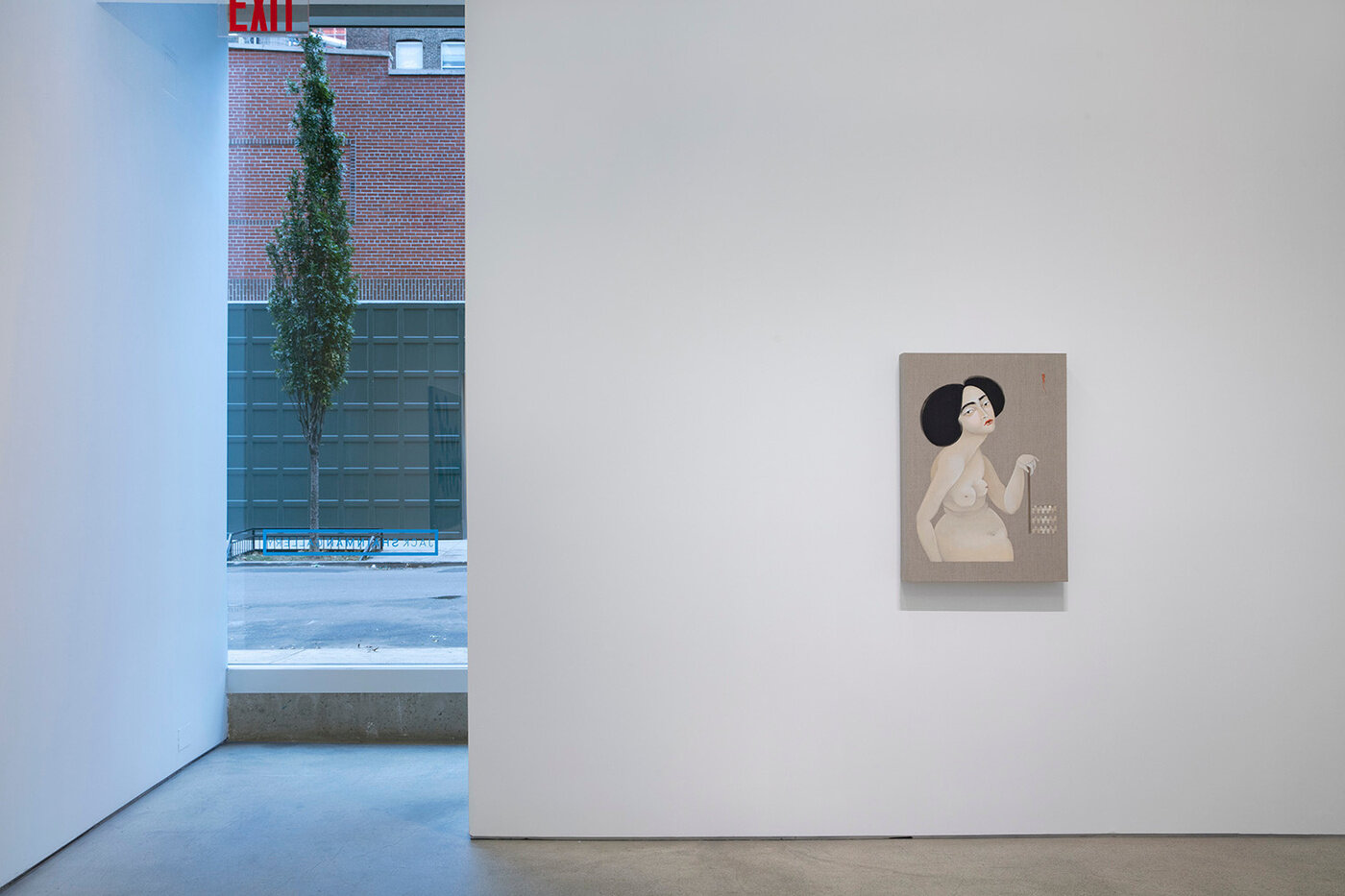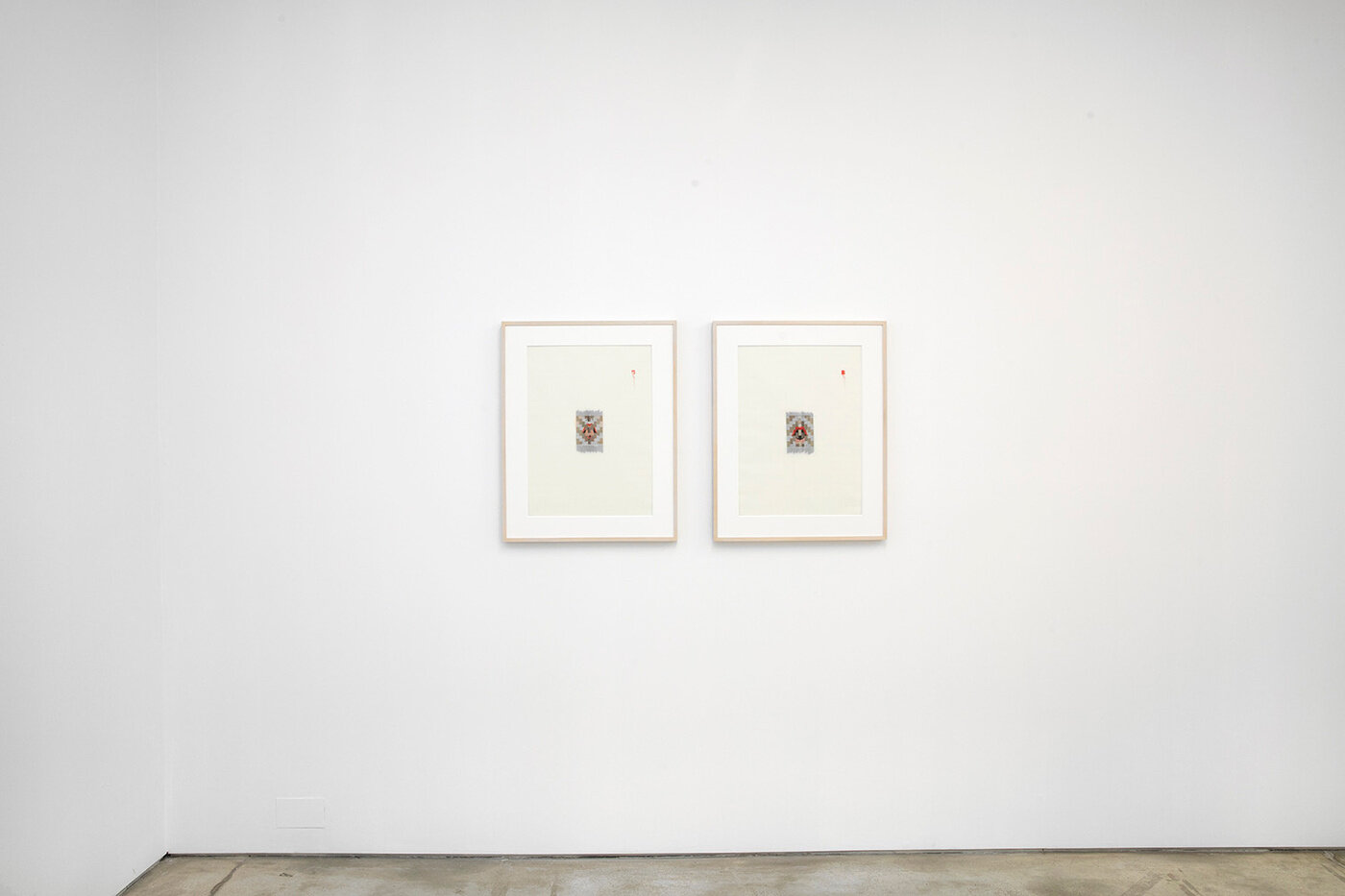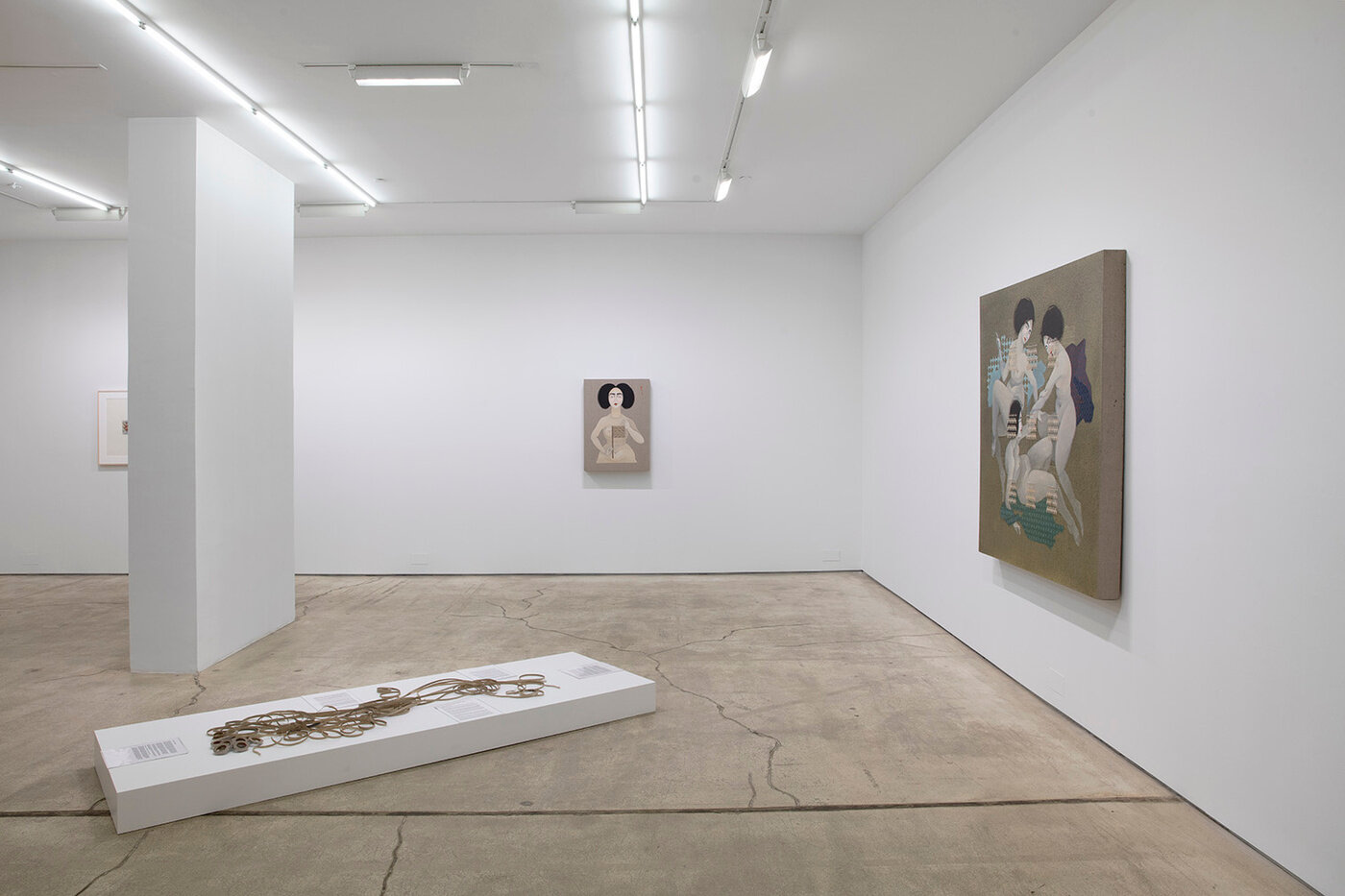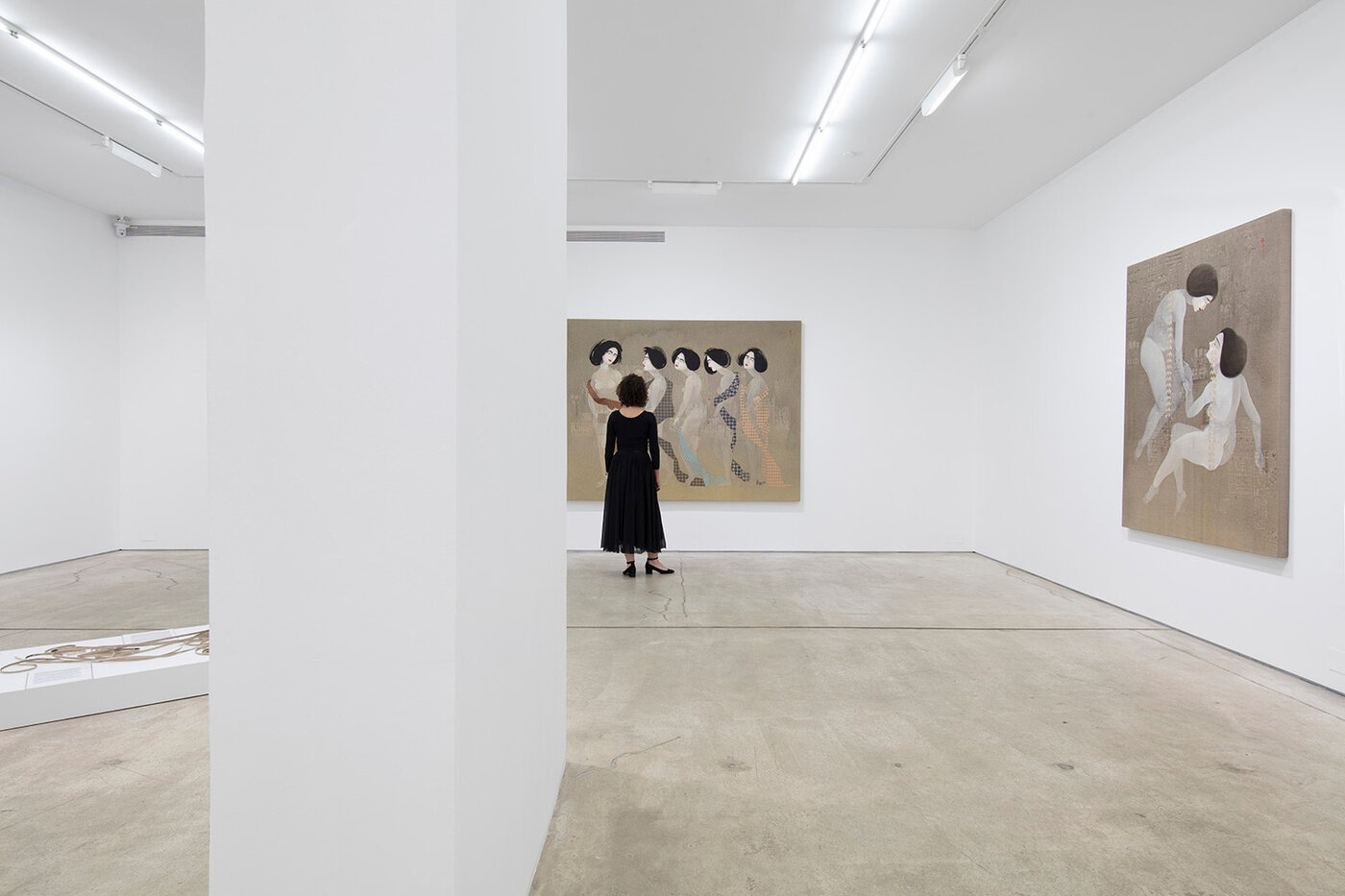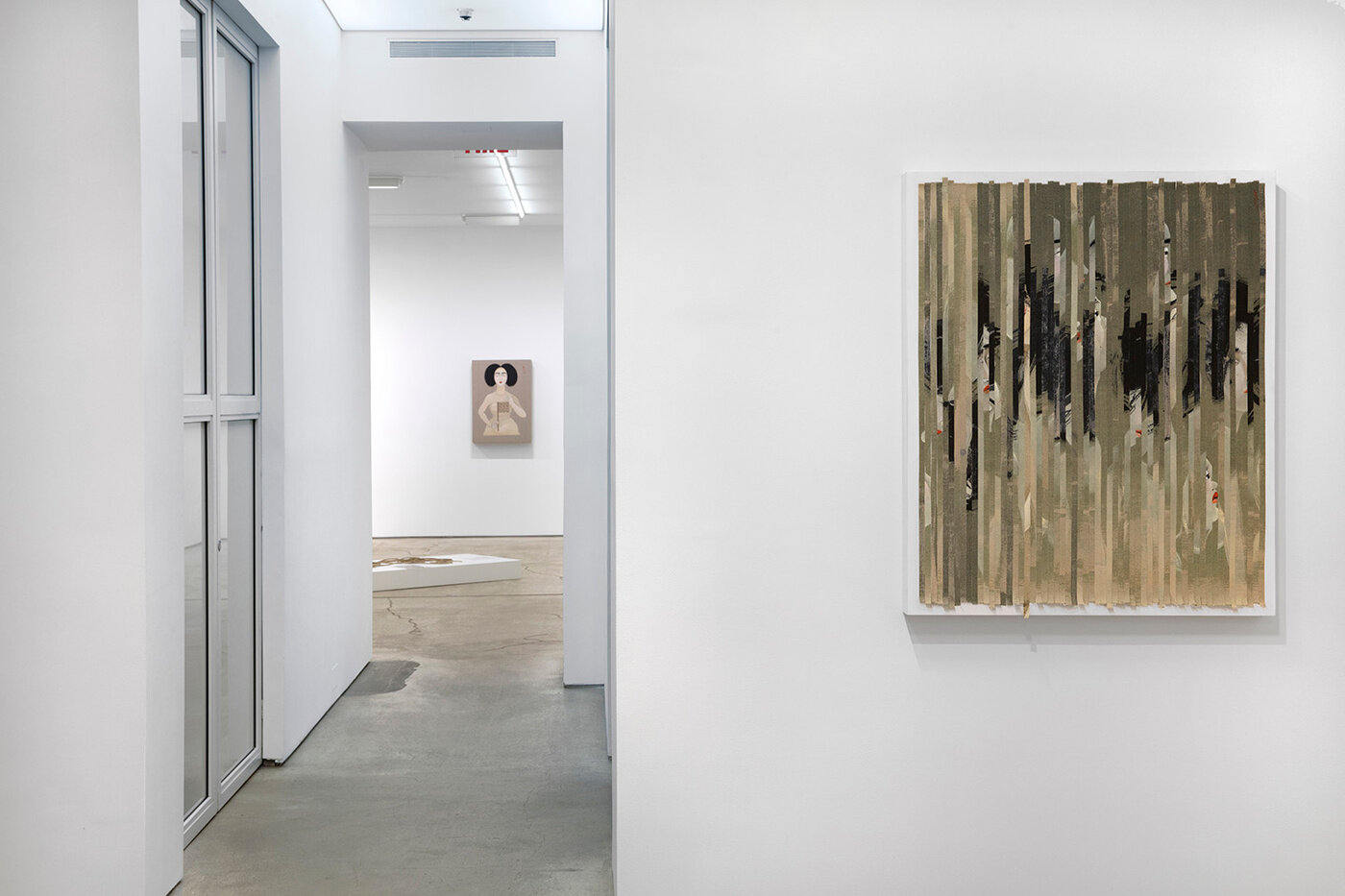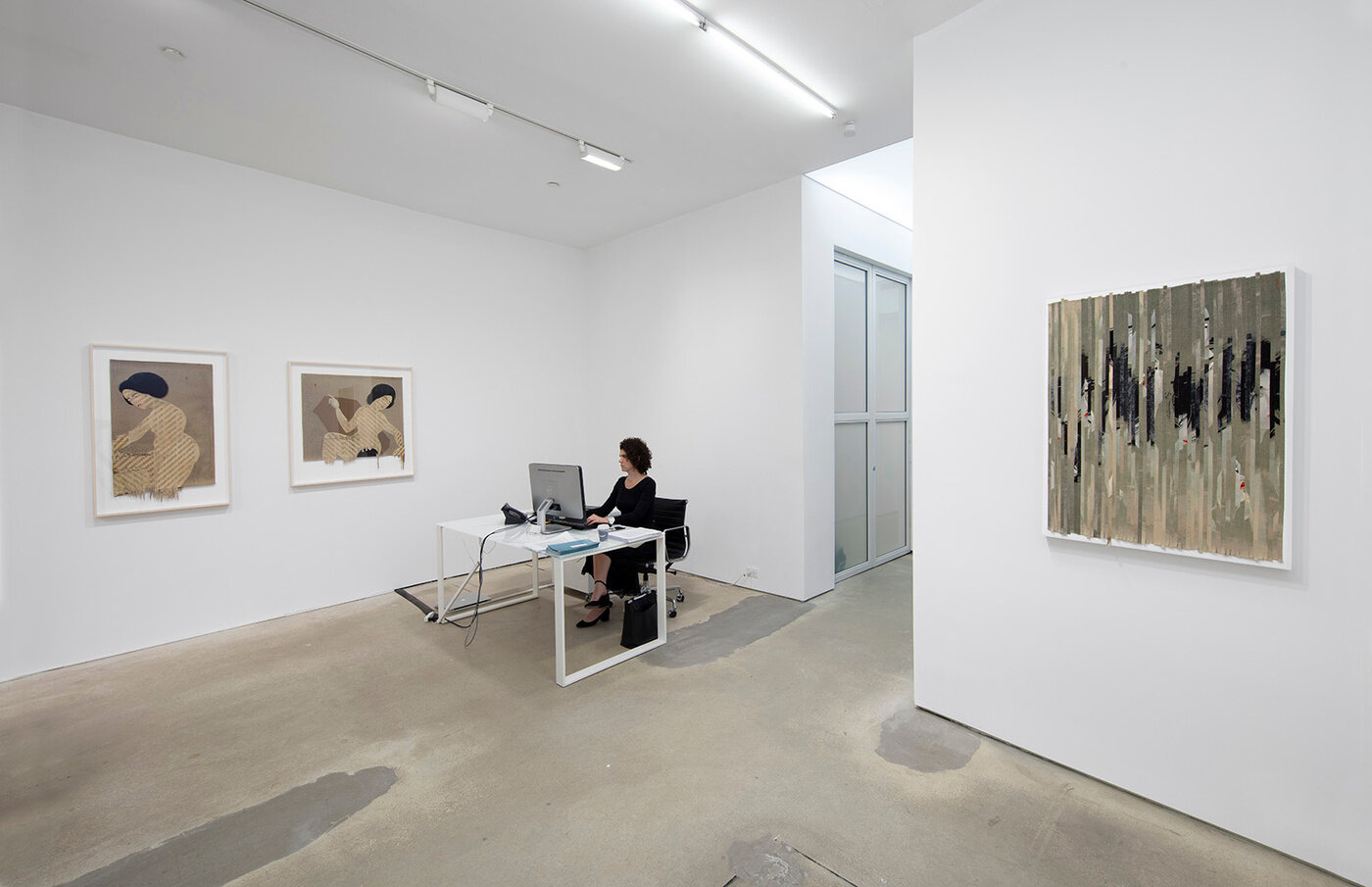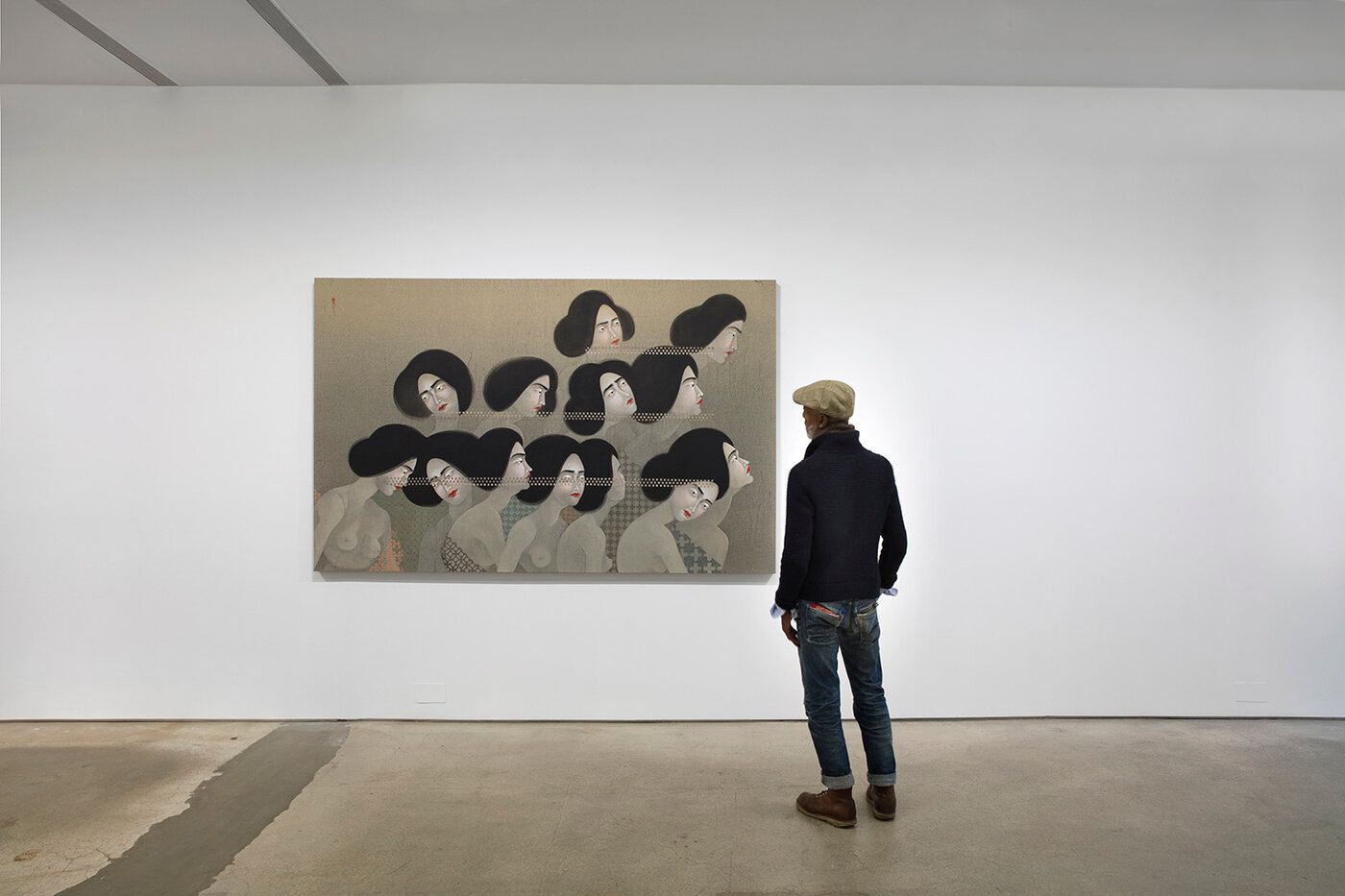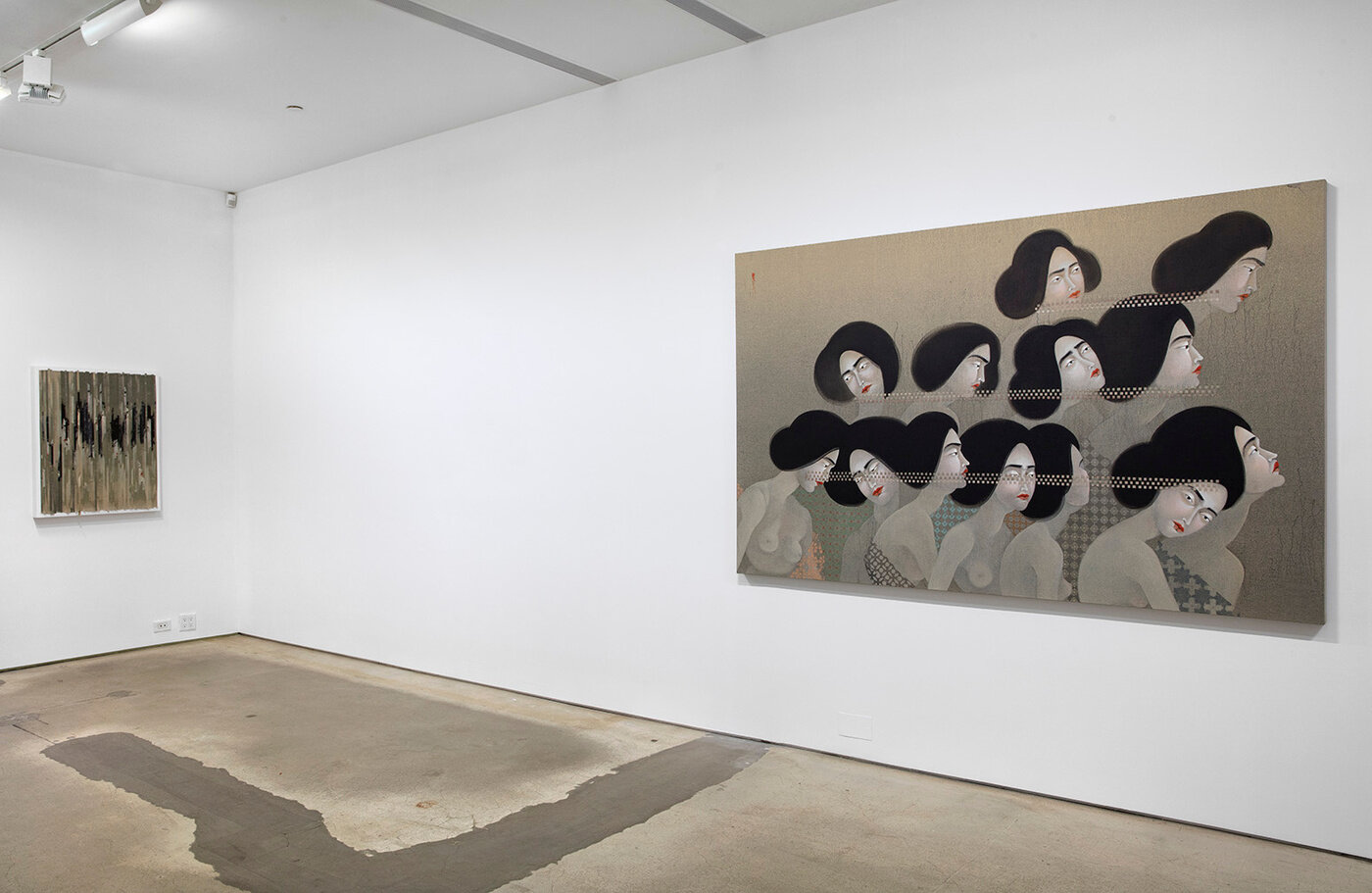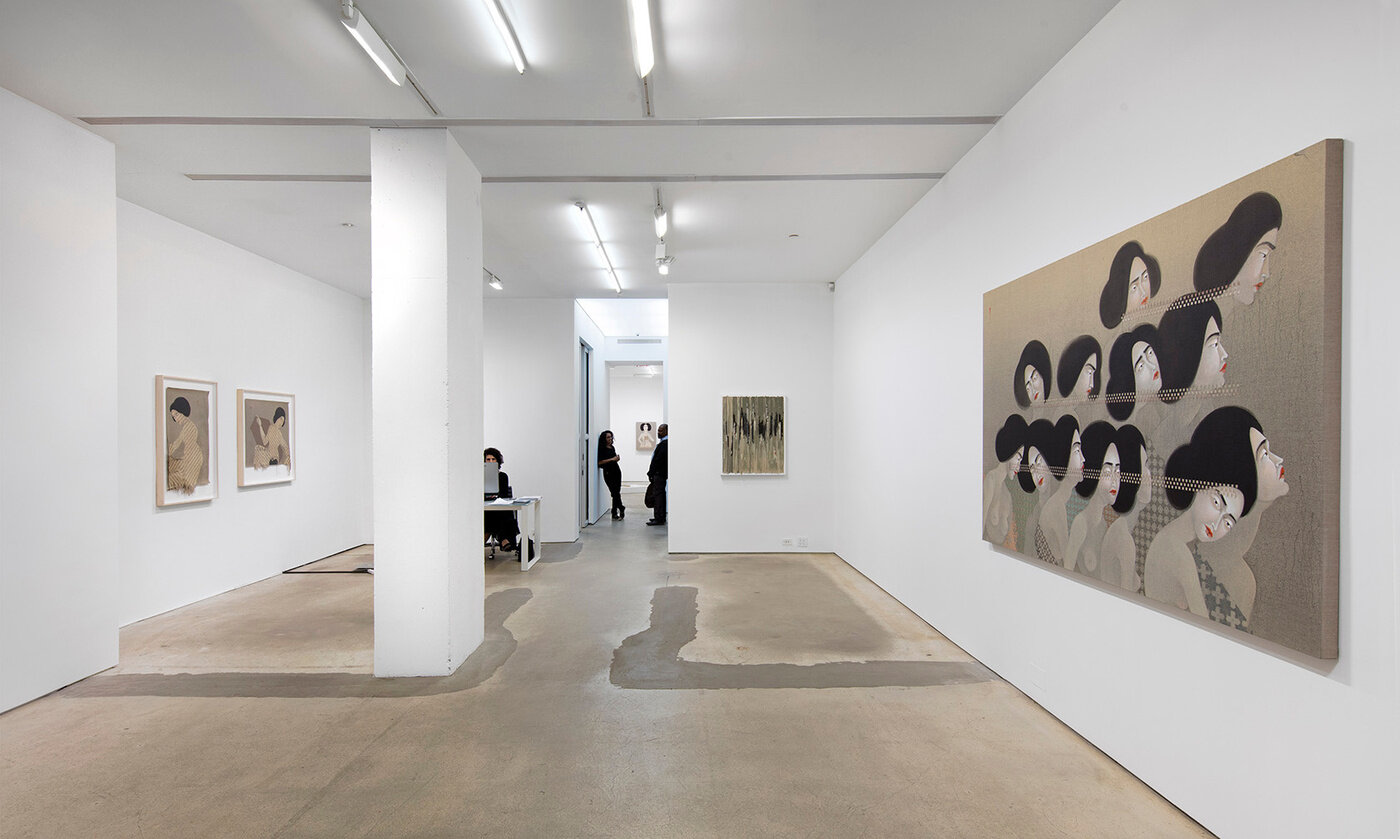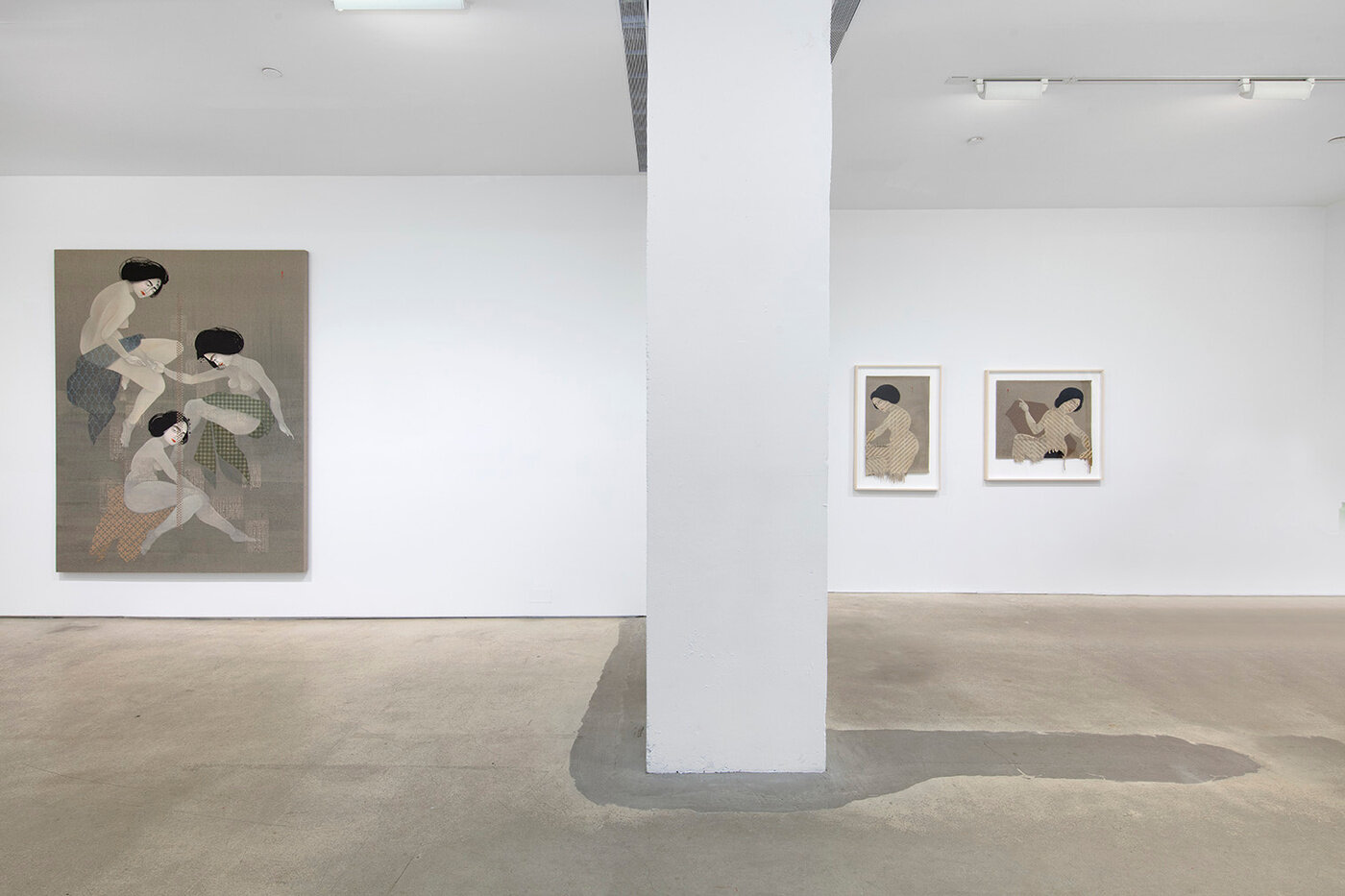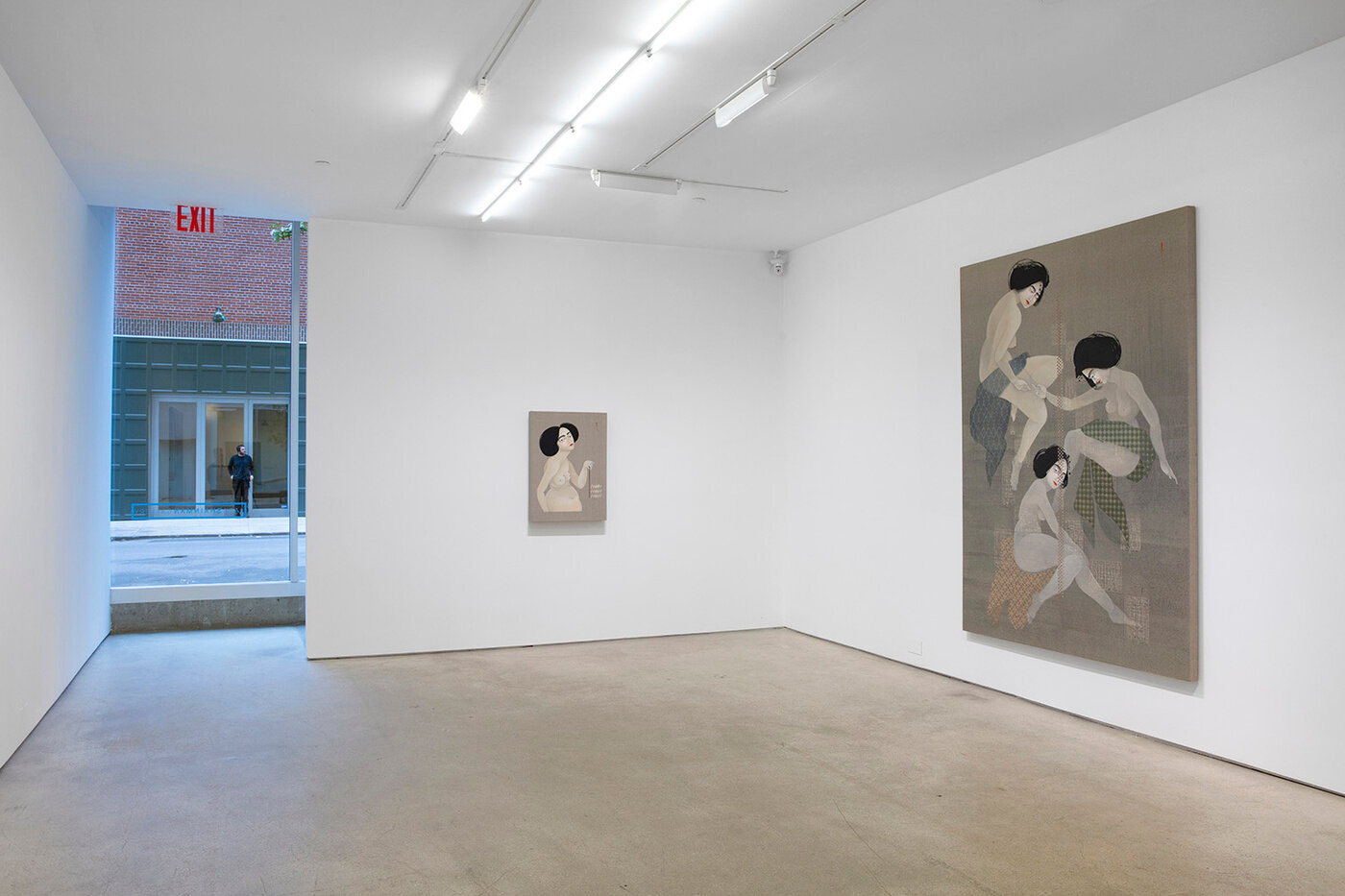Hayv Kahraman: Re-Weaving Migrant Inscriptions
Works (Tap to zoom)
Press Release
HAYV KAHRAMAN
Re-Weaving Migrant Inscriptions
October 26 - December 20, 2017
Opening reception: Thursday, October 26th, from 6-8 PM at 524 West 24th Street.
Please join us Saturday, October 28th at 4 PM for a collective performance, Gendering Memories in Iraq, featuring Veracity Butcher, Naomi Lorrain, Liz Morgan, Sana Sepehri and Megan Shindler.
Jack Shainman Galleryis pleased to announceHayv Kahraman’sthird solo exhibition at our 24thStreet space,Re-weaving Migrant Inscriptions. In this new body of work, Kahraman focuses on themahaffaas an object of mnemonic value. Themahaffaisa hand-held fan made by weaving the fronds of palm trees that dates from the Sumerian and Abbasid eras and is still made in the exact same way in Iraq today. Most importantly, it was one of the few objects Kahraman's family took as they fled Baghdad during the first Gulf War. Here, she describes the object and the process of weaving her canvas:
I remember my mom walking into the room and placing a medium sized suitcase on the floor and saying “it's time.” We could only bring one suitcase. We packed the necessities for survival. But we also packed a mahaffa. It traveled with us through the Middle East, Africa and Europe until we finally reached our destination in Stockholm. It now decorates our home in Sweden, assuming qualities of a shrine or a memorial as it carries past imaginations of“home”, both idealized and contested.
There’s a sense of betrayal and resolution as I weave the strips of one shredded figurative painting into another's torn surface. The process is palimpsestic in nature, yet you can still see and feel the painting's original layer. It is not restored to its original state. It is transformed. The final work is a synthesis of transversed materials and bodies each carrying their own mnemonic itineraries. There’s a catharsis that happens during the act of weaving as I surgically cut the substrate and then attempt to repair it. The body, Her body, is a sight where trauma resides and in that violence, there is rebirth. Perhaps this comes with the territory of being a refugee, an endless activity of collecting fragments and repetitively weaving them into our memories, both as a form of mourning trauma but also as a drive to circumvent erasure.
For me however, the questions remain: How do these objects function within the psyche of a refugee? What does it mean to suture fragments in the effort to archive them, and why is this so important?
Kahraman will also be conducting a performance titled Gendering Memories of Iraq where her female subjects will come alive through the narration of a script that is at once personal and part of a collective memory.
The following is an excerpt from a text written by poet and scholar Sinan Antoon on the occasion of this exhibition:
Iraqhasbeen the site of harrowing violence in the last four decades. From dictatorship to bombing campaigns, economic sanctions, military invasions and occupations, it is a space of ongoing mutilation and destruction. This mutilation and the wounds and remains it has left extend from the bodies and psyches of Iraqis to their geography and collective memory.
An Iraqi artist living and working in the United States (the “co-author” of Iraq’s destruction) in the age of permanent war confronts yet another added layer of contradictions. Her gendered and racialized body and being mark her as amultipleother. She is at once fetishized and feared and her works are subjected to an often reductive and patronizing Euro-centric gaze.
Hayv Kahraman’s works sail through these dangerous straits and arrive before us safely and elegantly, delivering haunting questions interwoven with visceral beauty. Like a refugee, this “body” of works arrives bearing visible and invisible scars and carrying the weight of history and its injuries and traumas, but also memories.
The few cherished objects refugees and displaced persons choose (if and when they can) to carry across dangerous international borders are invested with immense symbolic and emotional value. The displaced object becomes a synecdoche for an actual and an emotional place that was “home.” A fragment, and a relic that assumes and performs a range of potential mnemonic and aesthetic functions. This is the status of themahaffa deployed by Kahraman in these works.
At times themahaffais whole and intact, held by the familiar figure. But in a number of the works, such asMnemonic Artifact 1 and Study 1,it takes on a more complicated and tangible function; at once disquieting and powerfully evocative. The interwoven strands and the distinctive pattern they form on the surface of themahaffaare translocated (another dis-placement) onto the surface of the works themselves. This motif invests the surface (and each work) with material and tangible depth and expands the range of potential meanings, let alone the palpable aesthetic pleasure it induces.
Like geometric wounds, they gently interrupt the larger material/textural context, and gesture to both the migrant itinerary of themahaffaas well as its material and metaphorical logic. The body of works and the bodiesinthem come from elsewhere and arrive bearing scars. Antithetical material and concept are interwoven: strands of temporal and special zones: the past and the present, the here and the there, the imaginary and the real, and what is lost and (never) found. The self is interwoven with its others and its surroundings. In some instances, the entire surface of the body becomes that of themahaffa. The refugee/exiled/diasporic body isfar outside the frame of its original home/land. Like themahaffa, it is a fragment, a relic, and a vessel of meaning.
In an increasingly militarized cultural space, the civilian victims of the war, who are the primary targets of military might, disappear (that is if they ever appeared in the first place) and the soldiers become the war’s victims, rather than its perpetrators. The war and its logic haunt Kahraman’s work and she engages with them in a courageous and compelling way. This is crystallized in how she deploys the fragmented bodies of male soldiers (miniatures used in games) as a backdrop in the works. A reversal of gender and racial power dynamics and configurations is enacted here, but not in a triumphalist manner. The fragmented soldiers are permanently lodged into the body of these works and the bodiesinthem, like shrapnel, disfiguring them.
The “material” genealogy of the works in this collection is obviously crucial. The disfigured body is re-membered and it is incumbent upon us to try to retrace or imagine its painful journey.
Hayv Kahraman, born in Baghdad, Iraq, currently lives and works in Los Angeles.Her exhibition, Hayv Kahraman: Acts of Reparation is currently on view at the Contemporary Art Museum St. Louis, Missouri through December 31, 2017. Other recent solo exhibitions include Hayv Kahraman at the Joslyn Art Museum in Omaha, Nebraska.Hhd She has participated in exhibitions including Piece by Piece: Building a Collection, Selections from the Christy & Bill Gautreaux Collection, Kemper Museum of Contemporary Art, Kansas City;The Jameel Prize 2011 – Shortlist Exhibition,Victoria and Albert Museum, London which traveled to venues including the Museum of Fine Arts, Houston and the Cantor Center, Stanford University; andFertile Crescent, Paul Robeson Center for the Arts, Princeton. Her work is included in several public collections like the Los Angeles County Museum of Art, the North Carolina Museum of Art, Raleigh; American Embassy, Baghdad; The Barjeel Art Foundation, Sharjah; and MATHAF Museum of Modern Art, Doha.
Currently on view through November 4th at 513 West 20th Street is Andres Serrano, Torture. Upcoming exhibitions at the gallery include Nina Chanel Abney, Seized the Imagination opening November 9th and on view through December 20th at 513 West 20th Street. The Coffins of Paa Joe and the Pursuit of Happiness is on view at The School in Kinderhook through January 6, 2018.
Gallery hours are Tuesday through Saturday from 10am to 6pm. For the full text by Sinan Antoon or additional information and photographic material please contact Victoria Kung, SUTTON, victoria.kung@suttonpr.com, +1 212 202 3402.
